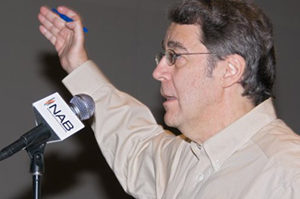
Fig. 1: Vertical elevation field graphs of KNOW(FM)’s analog 10-bay and digital one-bay antennas Least considered among the ways that IBOC can affect analog FM broadcast is the issue of host interference.
Ongoing discussions about increasing the IBOC power level have focused on the interference that may be caused to neighboring stations. There has been little or no recent research that effectively explores interference to the hosting station caused by its own IBOC transmissions; nor has there been a thorough study on the vulnerability of analog receivers to higher levels of IBOC injection.
Of the early tests of IBOC host compatibility, the most notable were performed by the ad hoc NAB study group led by engineering consultant Al Rosner. Among their conclusions was one that warned about the use of dual antennas; interference to the host station could result if the antenna vertical field patterns were not well matched. However, the problem areas were identified to be close to the tower and it was surmised that this “self-interference” should not be a problem.
The Federal Communications Commission took this as its lead to allow licensed auxiliary antennas to be used for IBOC as long as the radiation center of the IBOC antenna was at least 70 percent of the height of the analog antenna and no more than 3 seconds of longitude and latitude separated the antennas. (See section 73.404 of the FCC Rules.)
(click thumbnail)
Fig. 2: Map of the locations of the KNOW(FM) documented interference complaints Using dual antennas for hybrid IBOC is relatively inexpensive when compared to other combining methods. Separate antennas are inherently more efficient because there is no power lost in a combiner, where 90 percent of the digital signal can be shunted to a reject load. Typical methods to reach the –10 dBc IBOC power level, such as common amplification and high-level combining require significantly larger transmitters. When (and if) higher IBOC power levels are authorized, we should expect that many stations will choose dual antennas. However, broadcasters who choose to use dual antennas should carefully evaluate the extent of host interference that their primary analog service may receive.
A case study in host interference was presented by Mike Hendrickson of Minnesota Public Radio’s KNOW(FM) in the Oct. 17, 2007 issue of Radio World Engineering Extra. KNOW(FM)’s 10-bay antenna is located on a tower in a highly populated urban area of Minneapolis. It was cost-effective for MPR to use its single-bay auxiliary antenna that was already on the tower. This antenna met the FCC’s minimum separation standard by having a radiation center that was within 77 percent of the KNOW(FM) analog antenna. The 10-bay and one-bay vertical elevation field graphs for these antennas are shown in Fig. 1.
(click thumbnail)
Fig. 3: Graph showing KNOW(FM)’s predicted self-interference zones in red using a separate 10-bay analog antenna with a one-bay digital antenna operating at –20 dBc Unfortunately, when MPR turned on IBOC at the authorized –20 dBc power level, they began receiving numerous listener complaints. They carefully documented the location of the complaints, plotted and numbered on the map in Fig. 2. The interference was reported to be quite severe, as listeners in these locations complained about a complete loss of KNOW(FM)’s analog modulation.
The interference locations fell roughly in the nulls of KNOW(FM)’s 10-bay analog antenna. MPR’s documentation provides us with the opportunity to calculate the average desired to undesired (D/U) ratio level, which results in interference, and to extrapolate the results to other combinations of antenna bays and radiation centers. After logging the initial listener complaints, MPR engineers shut down the one-bay IBOC antenna system and replaced it with a high-level combined system, thereby solving all the complaints at once.
PREDICTED SELF-INTERFERENCE
To look at why interference occurred at these locations, a computer program was built to plot and compare the KNOW(FM) analog and digital signal strength in dBu from the tower base out to 5,000 meters (3.1 miles).
(click thumbnail)
Fig. 4: Graph showing KNOW(FM)’s predicted self-interference zones in red using a separate 10-bay analog antenna with a one-bay digital antenna operating at –10 dBc This program loads the vertical elevation field files for the 10-bay analog and the one-bay IBOC antenna and uses basic trigonometry to determine the distance and angle from the antennas on the tower to various locations on the ground. With this information we can determine the radiated power at the calculated angle (ERP {at angle} = Vertical Elevation Field {at angle} squared times the antenna’s maximum ERP). By using the FCC curves we can then determine actual signal strengths at the listener’s position.
Fig. 3 shows the interference location points along a horizontal scale of distance and a vertical scale of signal in dBu. The analog signal is plotted in black, while the digital signal is in orange. At the bottom of the graph are difference plots between the black and orange lines. The light blue line shows the difference in dB of the analog signal strength compared to the IBOC signal strength. The other graph line, which starts off as dark blue, is the inversion of the light blue line, however this line turns red when the digital signal fails to be at least 6 dB below the analog signal, a condition which indicates potential interference to the hosting station.
(click thumbnail)
Fig. 5: Graph showing KNOW(FM)’s predicted self-interference zones in red using an 10-bay analog antenna interleaved with a two-bay analog antenna operating at –10 dBc The 6 dB value was chosen because the FCC has established a D/U protection ratio of at least 6 dB for first-adjacent station relationships. This value works well for our predictions, because the numbered interference complaint locations fall nicely on or near the red line peaks where the IBOC exceeds the analog signal by –6 dB or greater. The lighter blue line is the difference in dB between the analog carrier and the digital carrier.
While the 11 listener complaint sampling is small, and certain radios are better than others at rejecting first-adjacent interference, nevertheless there is good agreement between the alignment of the interference complaints and the peaks of the red IBOC difference signal. With this information in hand, we were able to predict the location of the host interference with other configurations.
(click thumbnail)
Fig. 6: Graph showing KNOW(FM)’s predicted self-interference zones in red using a 10-bay analog antenna interleaved with a four-bay digital antenna operating at –10 dBc The Fig. 3 graph was made when KNOW(FM) was transmitting IBOC at –20 dBc. To determine what the interference would be at –10 dBc, we ran the program with 10 kW IBOC vs. 100 kW analog. The antenna heights above ground remained the same at 211 meters for the IBOC antenna and 274 meters for the analog antenna. Fig. 4 shows the results.
Notice that the red graph line shows interference to the host from the IBOC sidebands from 60 meters to 5,000 meters from the tower base. At some points, the IBOC carrier exceeds the analog carrier by more than 30 dB with one point exceeding 40 dB. This would clearly be a bad situation for any station having a transmitter in an urban area.
We investigated whether it would help to move the antenna centers close together by interleaving a two-bay IBOC antenna with the 10-bay analog. The graph in Fig. 5 shows what this would look like at a –10 dBc IBOC power level. Not a pretty picture, but the interference area is reduced by nearly one-half as it travels out to approximately 2,600 meters. Having more IBOC bays to match the 10-bay analog antenna and providing a common center of radiation clearly helps the situation.
(click thumbnail)
Fig. 7: Graph showing KNOW(FM)’s predicted self-interference zones in red using a separate 10-bay analog antenna with a four-bay digital antenna operating at –10 dBc However, it appears that even an interleaved antenna will cause substantial host interference when only two IBOC bays are used. Fig. 6 shows the results if we double the number of bays to four with an interleaved antenna at –10 dBc IBOC injection.
The interference area is from the tower base to approximately 1,950 meters, only a small improvement. Some interference has been removed in several places, including from 590 meters to 1,100 meters from the tower base.
For comparison purposes, let us return to the use of separate antennas with a 10-bay at 274 meters and a four-bay antenna at 211 meters above ground (see Fig. 7). As you would expect, this arrangement does not look very good.
(click thumbnail)
Fig. 8: Graph showing KNOW(FM)’s predicted self-interference zones in red using a separate 10-bay analog antenna with a six-bay digital antenna operating at –10 dBc What about adding more bays to the IBOC antenna? In Fig. 8 we look at a dual antenna with a six-bay IBOC and a 10-bay host antenna. This arrangement also looks pretty bad.
RATIOS IN MOTION
We can predict IBOC interference in another way. The map in Fig. 9 was created using the V-Soft Communications’ Probe 3 software. The FCC signal prediction method was selected. The KNOW(FM) 10-bay analog vertical elevation field pattern was loaded into the computer with the IBOC one-bay antenna pattern. The antennas were located vertically on the tower using the original KNOW(FM) heights. The digital antenna was within the FCC’s 70 percent requirement. The IBOC injection level was set at –20 dBc.
We told the program to create color bands representing an analog to IBOC D/U ratio which was to be 6 dB or less. The green bands show up when the analog signal level is 20 dB or more below the digital signal, indicating severe interference. The red bands represent locations where the analog signal is between 10 dB below and 20 dB below the digital signal. The white bands represent locations where the analog signal is between 10 dB below and 6 dB above the digital signal. The yellow color is the city boundary background and can be ignored.
(click thumbnail)
Fig. 9: Map showing KNOW(FM)’s predicted self-interference zones in green, red and white color bands using a separate 10-bay analog antenna with a one-bay digital antenna operating at –20 dBc. As you can see from the Fig. 9 map, the interference bands at the current –20 dBc power level extend out to a radius of approximately 3.5 kilometers from the tower site.
The map in Fig.10 shows the interference area at –10 dBc operation, and it uses the same scale as the –20 dBc map in Fig. 8. Clearly, the host interference at an elevated power level of –10 dBc is unacceptable. The map in Fig. 11 plots the interference area with a 10-bay analog and a four-bay digital antenna for comparison. The antenna heights are the same, offset by 63 meters, but the IBOC power is reduced to –20 dBc.
(click thumbnail)
Fig. 10: Map showing KNOW(FM)’s predicted self-interference zones in brown, green, red and white color bands using a separate 10-bay analog antenna with a one-bay digital antenna operating at –10 dBc. Finally, the map in Fig. 12 shows the 10-bay antenna with a four-bay IBOC antenna at the KNOW(FM) original height with an IBOC power level of –10 dBc.
OTHER FACTORS
Any time an antenna is side-mounted on a tower, the tower itself causes a distortion of the pattern. Generally, the vertical steel elements absorb the vertically radiated signal in the azimuth going through the tower but reflect it in the opposite direction. The same can occur for the horizontal polarization but to a lesser extent. This is why engineers almost uniformly mount an antenna on the side of the tower favoring the community of service. If dual antennas are used, they should both be mounted in an identical manner and occupy the same side of the tower. Another problem can occur when the IBOC antenna is mounted at a point where the tower face size differs from the analog mounting location, such as in a tapered tower.
In this article, we have not examined the impact of dual antennas having a different horizontal center. While the FCC allows a difference of up to 3 seconds, (about 300 feet) if the antennas are installed in this manner, it changes the angle to and the ground location of the nulls in respect to the analog antenna. This is a further departure from an identical mounting and a common center for the antennas which, as we have observed, helps to prevent interference to the host station. This type of an installation for an IBOC transmitter is perhaps the least attractive of all.
(click thumbnail)
Fig. 11: Map showing KNOW(FM)’s predicted self-interference zones in green, red and white color bands using a separate 10-bay analog antenna with a four-bay digital antenna operating at –20 dBc. RECEIVER NOISE TO SIGNAL PERFORMANCE
As mentioned, the results of these studies are tempered by the specific interference rejection characteristics of each receiver. There have been few studies of analog receivers to determine exactly how they perform when the host station transmits IBOC. To gain more information about this effect, NPR Labs recently studied the Sony DTR-DE197 component receiver. This receiver should be somewhat representative of the higher-end component receivers available on the market.
The graph in Fig. 13 shows the results of their study. This graph plots the weighted quasi-peak signal-to-noise ratio (WQPSNR) against the IBOC power level. Three receiver signal strengths were plotted as represented by the green, red and blue lines. At an IBOC power level of –20 dBc, with signal strength of –40 dBm at the receiver terminals (green line), the WQPSNR for this receiver is 52 dB. This combination best represents a signal relatively close to the transmitting site. It is approximately the signal strength that would be seen by a radio receiver using an outdoor dipole antenna at field strengths of around 70 dBu.
(click thumbnail)
Fig. 12: Map showing KNOW(FM)’s predicted self-interference zones in green, red and white color bands using a separate 10-bay analog antenna with a four-bay digital antenna operating at –10 dBc. In its “Digital Radio Coverage and Interference” study, NPR Labs used 40 dB WQPSNR as the point where subject listeners reported that “good” reception was lost. The graph shows that at a digital injection of –14 dBc, the WQPSNR drops to 44 dB. At –10 dBc, the WQPSNR drops to 37 dB, an unacceptable level for this signal strength, indicating the receiver performance is degrading as the digital injection increases to a full 10 percent.
However, at the weaker signal levels of –50 dBm and –60 dBm, represented by the red and blue graph lines, the signal-to-noise ratio at –10 dBc deteriorates by a smaller amount to 42 dB and 45 dB respectively. This indicates that the Sony receiver’s ability to reject higher levels of IBOC power is improved as the combined signal strength is reduced in the far field. While the Sony radio is one of the better radios on the market, its signal-to-noise ratio was reduced by 15 dB at the –10 dBc power level. For those FM radios that do not meet Sony’s better specifications, the self-interference may degrade the signal even further.
(click thumbnail)
Fig. 13: Audio signal-to-noise deteriorates as the IBOC power level increases. It should be noted that the NPR measurements were performed in the lab and they did not consider Raleigh fading or multipath, which could further deteriorate the signal-to-noise ratio and relative strength between the digital and analog carriers.
These results indicate that increasing the IBOC power level inevitably puts more noise in an analog receiver. While the receiver studied is only one of many, it should be somewhat representative of other higher-end receivers in its class. Such receivers are usually better able to reject interference, unlike less expensive models. NPR Labs Senior Engineering Technologist John Kean reports that NPR plans to study many more receivers in the future.
CONCLUSION
By using existing data from the KNOW(FM) experience, we can predict the location of host interference. Dual antennas with differing centers and numbers of bays will not avoid this interference. For digital operation at –10 dBc, the host interference can be widespread. Interleaved antennas perform better, yet interference cannot be completely avoided without using the same number of bays. NPR’s receiver study indicates that a higher-end component receiver will see its signal-to-noise ratio degraded more at higher combined signal strengths than at lower levels. Stations, particularly those in urban areas, need to be critically aware of the looming dangers in the path to elevated IBOC power.
The author is president of V-Soft Communications.
Comment on this or any story. Write to[email protected]with “Letter to the Editor” in the subject line.
























